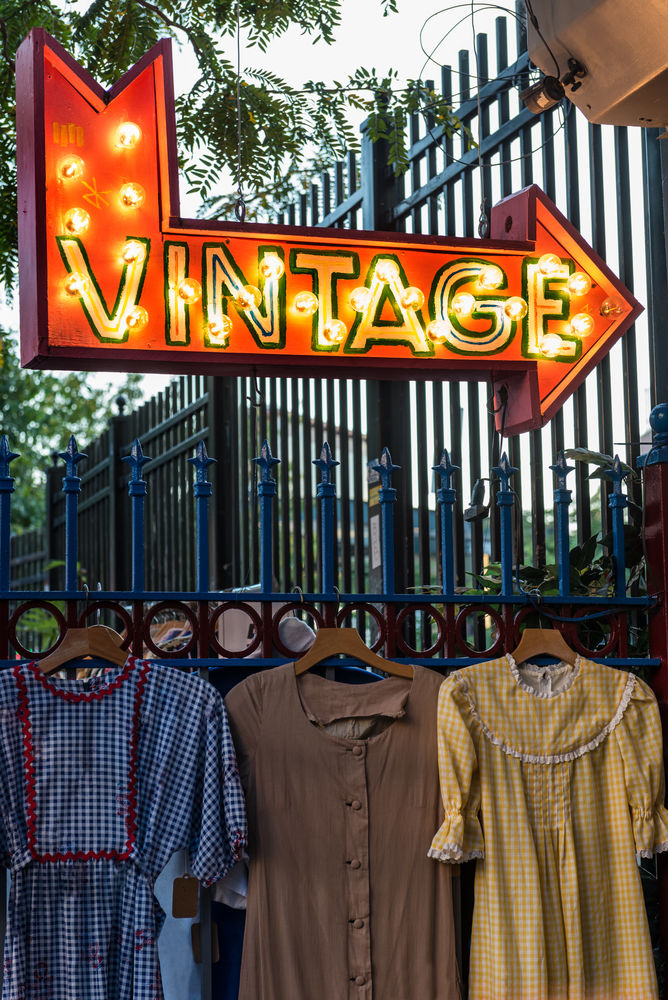|
by Dylan Murphy Recreational thrift shopping is a hobby that has emerged among American adolescents within the past 10 years that marks a perceptible shift in the collective intuition of the American youth’s relationship to both fashion and materiality. Prior to this cultural reevaluation, the consumer demand for thrift shopping was tied to the entirely unglamorous realities of providing second-hand clothing at accessible prices for families and individuals who hadn’t the financial resources to purchase new, name-brand clothing. Recognizing that store-bought clothing is bereft of a certain auratic value, consumers have flocked en masse to thrift stores as a means to source clothing articles that serve to reflect a self-image that hopes to recapture the sentimentality of material objects. To contextualize how thrift shopping is a component of this cultural shift is to first examine the peripheral changes in collective sentiments that fostered such a change in consumer habits to begin with. The financial strain that was brought on by the 2008 housing crisis impressed the fragile capriciousness of money upon the American psyche’s perception of wealth and how wealth is displayed in a socially sanctioned way. The stylistic excesses of the early 21st century (perpetuated by celebrity fashions of immodest and non-utilitarian styles of leather and velour as well as ostentatious jewelry and adornments) became both impractical and tactless in a time where the average American household was facing an inordinate amount of debt and long-term unemployment. This time of economic vulnerability was sobering for the American people, as it made strikingly clear the vast inequities present in the U.S. class system, and what followed was a consumer trend towards fashionable pragmatism. The mythology of thrift shopping, however, is found in its transcendence from mere modesty into a cultural tentpole that hopes to reimbue materiality with a tonal sense of uncommercialized rootsiness. The rapid growth of clothing brands and mass production of identical items of clothing has devalued or at the very least demystified clothing as purposefully made (and worn) garments that carry with them the artistic intent of their creator. This alienation from the intimacy that a person has with what they wear manifests itself in a wider social appetite for clothing that feels historied and well-worn. That appetite has produced a generation of adolescents that desire to physically express their appreciation for the deliberately retrograde and seek to vicariously enmesh themselves with the implied experience that the clothing is laden with. The appropriation of thrift clothing from its necessitous origins to its bum-chic alt-fashion status also implies a cultural distortion that exploits the image of scarcity for the sake of a fashionability. The redefinition of the cultural value of thrifted wares as merely something to equip young adults with unconventional garb is irreverent to the unfortunate realities of the class inequity that still very much exists and requires many Americans to purchase second-hand clothing not for the sake of style but by the constraint of destitution. Furthermore, to canonize something into the stylistic repertoire requires the subject matter, in this case second-hand clothing, to enter a solely aesthetic scrutiny that further estranges and obscures the cultural object from its historical context and sociocultural realities. The consequence of this change is the obfuscation of the class inequities that the ontology of thrift stores had made so lucid and recognizable to the American populace. This distortion of the nature of thrift stores supersedes (and thereby trivializes) the poignancy that should be innate in their cultural understanding with a perversion of reality that discounts the tact and mindfulness that defined thrift shopping’s existence to begin with.
0 Comments
Leave a Reply. |
Archives
March 2024
Writers
All
|
